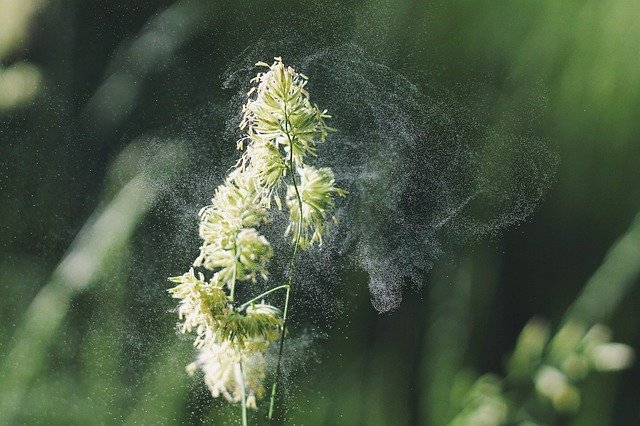Air purifiers remove most airborne particles, especially dust. However, some people cannot help but wonder, “Do Air Purifiers Remove Pollen?” If this has been your question, you will benefit from the information below.
What is pollen? Pollen is a fine and powdery substance produced by the anthers of seed-bearing plants and is carried through the air.
It is an outdoor air pollutant, but it finds its way into your house through open windows. Besides, pollen sticks on clothes and shoes worn outside. Pollen can trigger allergic reactions and it is even worse when confined in your house.
Some of the major reactions from allergies include sneezing, coughing, red eyes, nasal congestion, and headaches. Pollen can also cause asthma attacks. With such miserable symptoms, it is impossible to enjoy your time indoors.
For this reason, people make efforts to eliminate or reduce pollen count from indoor air using air purifiers among other methods.
The below informational video will also help you understand pollen better:
Choosing air purifiers for pollen
Air purifiers have proven to be the best in the fight against pollen allergies and reactions. So, the answer to the question “Do Air Purifiers Remove Pollen?” is an emphatic Yes. Air purifiers use several technologies to remove particles from the air, though some are ineffective for pollen.
If your home is troubled by pollen and looking for the best air purifier for pollen, consider the factors below to make the right purchase.
HEPA filter purifiers
True HEPA filters are capture 99.97% particles in the air as small as 0.3 microns. Considering that the smallest pollen particle is about 2.5 microns, pollen cannot escape HEPA filters.
In addition, air purifiers with HEPA filters come with pre-filters. In this case, the large pollen particles are already filtered before the air gets to the HEPA filters, which increases the appliance’s efficiency.
Ionizers
Ionizers function by creating a static charge with the airborne particles such as pollen. The air purifier releases negative ions, which combine with pollen to create a bond due to electrostatic attraction.
Then the charged particles are either attracted to the filter or surfaces in the room. So, it is also advisable to dust the furniture and vacuum your floors regularly to eliminate pollen.
Consider the CADR of the air purifier.
Clean air delivery rate (CADR) is the measure of particle-free air an air purifier can deliver. The CADR on air purifiers is achieved by testing the efficiency of an air purifier in removing three main indoor air pollutants: smoke, pollen, and dust.
The higher the CADR, the more effective the purifier is in removing the particles from the air. Therefore, since your primary concern is pollen, choose an air purifier with the highest pollen CADR figure.
For effectiveness, the CADR of air purifiers should be tested by an independent organization known as the Association of Home Appliance Manufacturers (AHAM). However, some manufacturers carry out the test on their own.
Therefore to guarantee efficiency, ensure that you purchase air purifiers with a genuine AHAM Certification Seal.
Recommended room size
Manufacturers usually indicate the recommended room size suitable for any particular air purifier. While this is the most common advertisement method, you should be careful because this information can be misleading.
The recommended room size should be the basis for purchase only if they have indicated how long the air purifier will take to clean the indicated room size. The best air purifier Canada should provide at least 3-5 air changes an hour.
Besides, air purifiers are have different fan speeds. The indicated figures are taken based on the appliance at the highest fan speed. At this speed, the air purifier can be very noisy and consume a lot of power.
For this reason, settle for a purifier that is effective at the lowest or medium fan speed.
Design of the unit
It is important to consider how the air purifier blows out clean air. Some air purifiers are blow out clean air downwards. This means that the air will blow dust and allergens from the floor and especially carpets into the air. So, this design compromises the purpose of the air purifier.
Therefore, always consider an air purifier that blows out the air sideways or upwards. What’s more, the design determines the attractiveness of the unit. It should blend well with the décor in your room even as it captures pollen.
The fight against pollen and pollen allergies
Apart from buying an air purifier, what else can you do get rid of pollen and to treat allergies? Here are a few things that should keep you and your loved ones safe from pollen allergies:
- Avoid going out a lot during pollen season especially on high pollen count days
- Once you get home, remove the clothes and take a shower
- Make use of nasal sprays
- Allergy shots
Conclusion
So far, it is clear that air purifiers can remove pollen from the air. For effectiveness, settle for an air purifier with HEPA filters and one whose pollen CADR rating is the highest. Also, the CADR should be appropriate for the size of your room. It should also deliver at least 3-5 air changes per hour (ACH).

